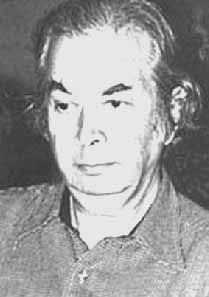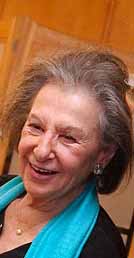As a player, Kaplan won 25
North American Bridge Championships (NABC). In 1957, Kaplan won the
McKenney Trophy (now called the Barry Crane Top 500) for most
masterpoints won during the year. He was twice runner-up in the world
championships: the Bermuda Bowl (1967) and the World Team Olympiad
(1968). Both final session losses were to the Italian Blue Team.
As an author, during the 1950s
and 1960s, Kaplan contributed a variety of influential articles to The
Bridge World (TBW). Their topics focused largely on tournament play and
on the proprieties of the game. The section of the laws of bridge titled
Proprieties describes the kinds of behavior that are encouraged,
and those that are deprecated. In particular, communication between
partners should occur only through their bids and plays, and not by the
manner in which the bids and plays are made. Kaplan wrote extensively on
these issues.
Kaplan also developed a new
style of reporting on bridge tournaments. Prior to Kaplan’s work,
reports focused on the brilliancies of the players involved. If the
players' mistakes were discussed at all, the report either declined to
identify the perpetrator, or stressed how unusual it was for such a
revered player to make any error, let alone an unwise play or
call.
This policy of comrades, which
expected name players to protect one another in their writings, did
little to enhance bridge journalism. Kaplan’s reports changed that.
While they never descended to the mean spirited, they named names and
described blunders – of course including Kaplan’s own.
After acquiring TBW in 1966,
Kaplan continued to write for the magazine, contributing (primarily)
editorials and tournament reports. Despite his accomplishments in other
areas, he is remembered particularly for the careful prose style he
brought to TBW, his gift for the bon mot, the tone he set.
As a theorist, Kaplan developed
the Kaplan-Sheinwold bidding system, which heavily influenced Standard
American bidding (apart from Standard's use of the strong no trump) from
the 1970s on: for example, much of the Precision bidding system as
originally formulated was based directly on Kaplan-Sheinwold. As Jeff
Rubens noted in his remembrance of Kaplan, “The foundation of
Kaplan-Sheinwold is more a blending of ostensibly eclectic elements into
a coherent whole than a sparkling new concept, but Edgar combined the
ingredients cleverly and added some finishing touches of his own."
As an administrator, in his
capacity as the chairman of the protest committee of the Greater New
York Bridge Association (GNYBA), Kaplan was able to steer between
extreme views of the Proprieties.
An older group of players
tended to regard the Proprieties as pious nonsense, believing that it
was unrealistic to demand that players bid and play in tempo: problems
arise that require time to consider. A younger group demanded that
violations of the proprieties be made part of a player’s record. (Such
violations can include, for example, fumbling with a doubleton on
defense: a singleton would be played promptly, with no trace of
indecision.)
Kaplan’s own view, adopted by
the GNYBA and subsequently by the American Contract Bridge League’s
National Laws Commission, was that if a player takes an action that
could have been influenced by unauthorized information, that action
constitutes an offense, but not an offense that should necessarily be
regarded as cheating. Instead, the incident should be handled as a
procedural matter – much as accidentally exposing a card is treated as a
technical violation, not as an attempt to cheat. In this way, bridge is
able to apply sanctions such as score adjustment when a player allows
himself to be inadvertently and subconsciously influenced by, say, his
partner’s hesitation. It isn’t necessary to go to the extreme of
accusing the player of deliberate cheating.
(Such accusations are reserved
for intentional efforts to secretly communicate unauthorized
information. These communications include actions such as signaling with
sniffs, tapping a partner’s shoes, even spreading the fingers
differently according to the holding. Each of these, and others, has
been attempted in national and international competition. A player found
guilty of deliberate cheating is not given merely a score adjustment but
is removed from the contest, from future contests, or from organized
bridge entirely, depending on the severity of the offense.)
For years Kaplan served on (and
chaired) regional, national and international bridge organizations in a
largely successful effort to publicize the nature of ethical bridge play
and to bring it to the bridge table. He chaired the ACBL’s National Laws
Commission for many years and was an ACBL delegate to the World Bridge
Federation, often chairing its Appeals Committee.
Kaplan also served at national
and international events as chief commentator, describing for the
audience the bidding and play that was displayed on the Vu-Graph.
Kaplan’s observations were the more illuminating for his extensive
knowledge of bidding systems employed by contestants, and the more
entertaining for the witty commentary into which he wove the
play-by-play.
As a publisher, Kaplan bought
TBW from McCall Corporation in 1966 and was its editor and publisher
from 1967 through 1997. TBW was founded in 1929 by Ely Culbertson, and
over the years became the premier publication concerning contract
bridge. TBW introduced features such as tournament reports, articles on
bidding and play, quizzes featuring answers by panels of experts, and
test-yourself columns. By the time that Kaplan took over, the basic
structure and style of the magazine had become highly successful. But
Kaplan brought Jeff Rubens into the operation as co-editor and together
they improved what was already a popular, well regarded publication.
For example, although the
magazine’s focus is contract bridge, discussions of other topics such as
the subjunctive mood and the Battle of Waterloo found their way into its
pages under Kaplan’s editorship. Issues of grammar, including gender and
punctuation, arose because readers, accustomed to viewing TBW as what
one termed a “haven of careful prose,” would write to complain about
what they perceived as some misuse of English. These readers received a
usually friendly, but occasionally testy, tutorial in the finer points
of grammar and diction. (The topic of Waterloo arose in a lengthy,
cogent and fascinating discussion of the difference between “subsequent”
and “consequent,” as applied to results at the bridge table.)
Kaplan succumbed to cancer in
1997, not long after playing in his final bridge tournament. The Blue
Ribbon Pairs, played at the fall NABCs, was renamed the Edgar Kaplan
Blue Ribbon Pairs in 1999 to honor one of bridge’s all-time great
players, writers, administrators and the authority on the laws of the
game.
![]() Edgar Kaplan (April 18, 1925 – September 7,
1997) was an American
bridge player and one of the principal
contributors to the game. His career spanned six
decades and covered every aspect of bridge. He
was a teacher, author, editor, administrator,
champion player, theorist, expert Vugraph
commentator, coach/captain and authority on the
laws of the game. He was the editor and
publisher of The Bridge World magazine
for more than 30 years (1967–1997). With Alfred
Sheinwold he developed the Kaplan-Sheinwold
bidding system.
Edgar Kaplan (April 18, 1925 – September 7,
1997) was an American
bridge player and one of the principal
contributors to the game. His career spanned six
decades and covered every aspect of bridge. He
was a teacher, author, editor, administrator,
champion player, theorist, expert Vugraph
commentator, coach/captain and authority on the
laws of the game. He was the editor and
publisher of The Bridge World magazine
for more than 30 years (1967–1997). With Alfred
Sheinwold he developed the Kaplan-Sheinwold
bidding system.

